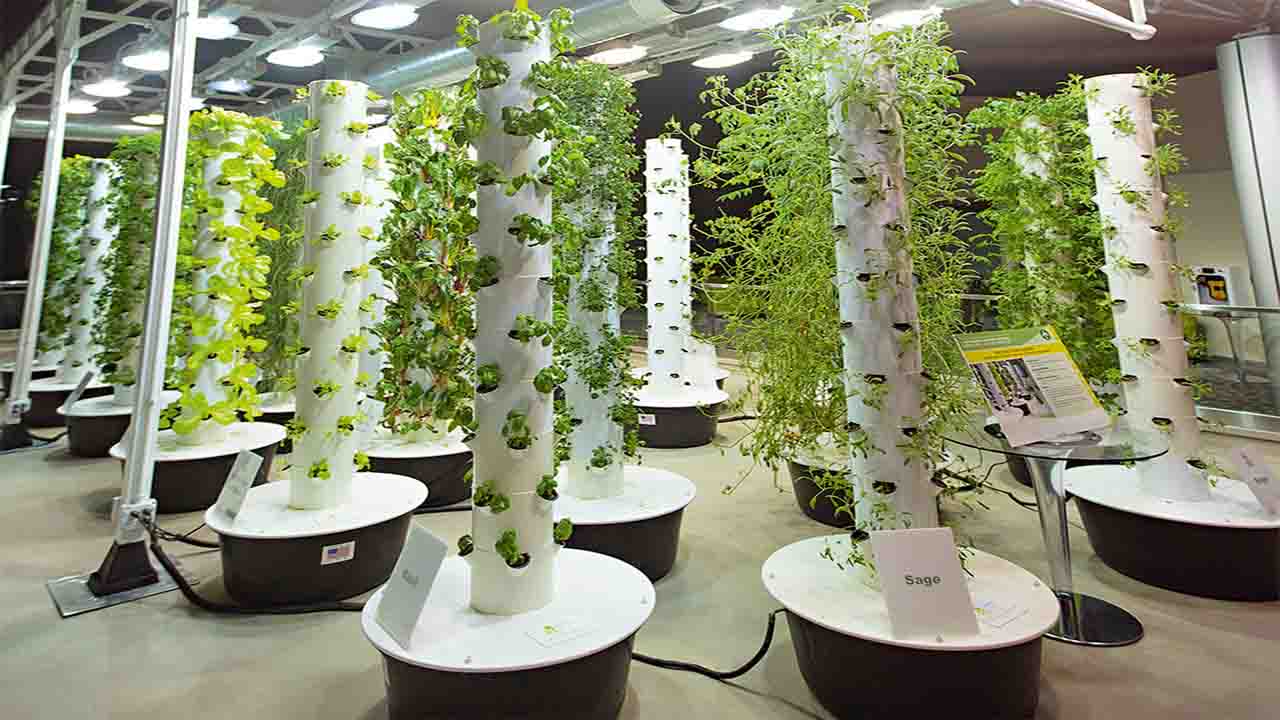The world’s population is rapidly growing, and with it comes the increasing demand for food. Traditional agricultural practices face numerous challenges such as limited land availability, climate change, and resource scarcity. In response to these challenges, an innovative and sustainable solution has emerged: vertical farming. This revolutionary approach to agriculture involves growing crops in vertically stacked layers or towers within urban environments, utilizing advanced technologies to create optimal growing conditions. This article explores the concept of vertical farming, its benefits, challenges, and its potential to transform the future of food production.
Vertical farming is a method of cultivating crops in vertically designed structures, often within urban areas, where space is limited. These farming systems employ controlled environments, such as hydroponics, aeroponics, or aquaponics, to provide plants with the necessary nutrients, light, and water. The vertical arrangement maximizes the use of available land by stacking multiple layers of plants, allowing for efficient space utilization.
Benefits of Vertical Farming:
- Increased Crop Yield: Vertical farming optimizes land use by utilizing vertical space, enabling significantly higher crop yields compared to traditional farming methods. The controlled environment allows for year-round cultivation, eliminating seasonal limitations and increasing production.
- Conservation of Resources: Vertical farms employ advanced technologies, such as LED lighting and precise irrigation systems, resulting in substantial water conservation. Additionally, vertical farming reduces the need for pesticides, herbicides, and fertilizers, making it an environmentally friendly approach to agriculture.
- Reduced Transportation and Food Waste: Vertical farms can be located in urban centers, reducing the distance between farms and consumers. This localization minimizes transportation costs and carbon emissions associated with long-distance food distribution. Moreover, on-site production helps reduce food waste by ensuring a fresh supply of produce on demand.
- Climate Resilience: Vertical farms are not susceptible to weather conditions and seasonal variations. By operating in controlled environments, these farms can mitigate the impact of climate change, ensuring a stable and reliable food supply even in adverse weather conditions.
Utilization of Abandoned or Unused Buildings: Vertical farming can repurpose abandoned warehouses, factories, or buildings, transforming them into productive agricultural spaces. This revitalization not only benefits food production but also contributes to the revitalization of urban areas.
Challenges and Future Directions:
- High Initial Investment: Setting up a vertical farm requires substantial capital investment, primarily due to the high cost of technology, infrastructure, and energy consumption. However, as technology advances and economies of scale are achieved, costs are expected to decrease, making vertical farming more accessible.
- Energy Consumption: Vertical farms heavily rely on artificial lighting and climate control systems, resulting in increased energy consumption. Developing sustainable energy sources and optimizing energy-efficient technologies will be crucial to minimize the environmental impact.
- Crop Diversity: While vertical farming is well-suited for leafy greens, herbs, and certain fruits, cultivating staple crops like grains and root vegetables remains a challenge. Research and development efforts are required to expand the range of crops that can be successfully grown in vertical farming systems.
- Integration with Urban Infrastructure: Integrating vertical farms into existing urban infrastructure, such as water and waste management systems, presents logistical challenges. Collaborative efforts between urban planners, engineers, and agricultural experts are essential to ensure smooth integration and maximize the benefits.
- Education and Awareness: As vertical farming gains momentum, education, and awareness programs are crucial to inform the public about its benefits and potential. Sharing knowledge and best practices will promote widespread adoption and community support for vertical farming initiatives.
Vertical farming represents a paradigm shift in agriculture, providing a sustainable and efficient approach to meet the growing global demand for food. By utilizing vertical space within urban environments, vertical farms optimize land use, conserve resources, and enhance food security. Despite challenges, advancements in technology and increased awareness are driving the expansion of vertical farming worldwide. As we look to the future, vertical farming has the potential to revolutionize food production, creating a greener, more resilient, and food-secure world.








